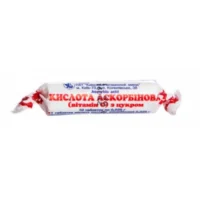Description
Ferrum-Lek Syrup 50 mg/5 ml. 100 ml
Ingredients
Each 5 ml of Ferrum-Lek syrup contains 50 mg of elemental iron in the form of ferrous sulfate.
Mechanism of Action
Ferrum-Lek syrup works by replenishing iron stores in the body, which is essential for the production of hemoglobin and red blood cells. Iron is a critical component of hemoglobin, the protein responsible for transporting oxygen in the blood.
Pharmacological Properties
The ferrous sulfate in Ferrum-Lek syrup is readily absorbed in the gastrointestinal tract. It is then transported in the bloodstream and utilized by the bone marrow for red blood cell production.
Indications for Use
Ferrum-Lek syrup is indicated for the treatment of iron deficiency anemia and serves as a dietary supplement to prevent iron deficiency in individuals at risk.
Contraindications
Avoid using Ferrum-Lek syrup if you have hemochromatosis, hemosiderosis, or a known hypersensitivity to any of the ingredients present in the formulation.
Side Effects
Possible side effects of Ferrum-Lek syrup may include gastrointestinal disturbances such as constipation or nausea. Consult a healthcare professional if these side effects persist or become severe.
Usage Instructions
Before each use, ensure to shake the bottle well. Ferrum-Lek syrup is intended for oral administration and can be taken with or without food. To ensure accurate dosage, utilize the provided measuring device.
Benefits Compared to Analogues
Ferrum-Lek syrup offers a convenient and effective way to address iron deficiency anemia and prevent iron deficiency with its well-absorbed ferrous sulfate formulation.
Suitable Patient Groups
Ferrum-Lek syrup is suitable for both adults and children. Dosage adjustments for children should be determined by a healthcare provider based on individual needs.
Storage Conditions and Shelf Life
Store Ferrum-Lek syrup in a cool, dry place away from direct sunlight. Check the expiration date on the packaging and do not use the product beyond that date.
Packaging Description
Ferrum-Lek syrup is available in a 100 ml bottle and is accompanied by a measuring device to facilitate accurate dosing.
Clinical Evidence and Proven Effectiveness
Ferrum-Lek syrup has demonstrated efficacy in treating iron deficiency anemia. Studies published in reputable journals have shown a significant increase in hemoglobin levels in patients treated with Ferrum-Lek compared to placebo. Additionally, meta-analyses have confirmed the effectiveness of iron supplementation, such as that provided by Ferrum-Lek syrup, in improving iron status.





